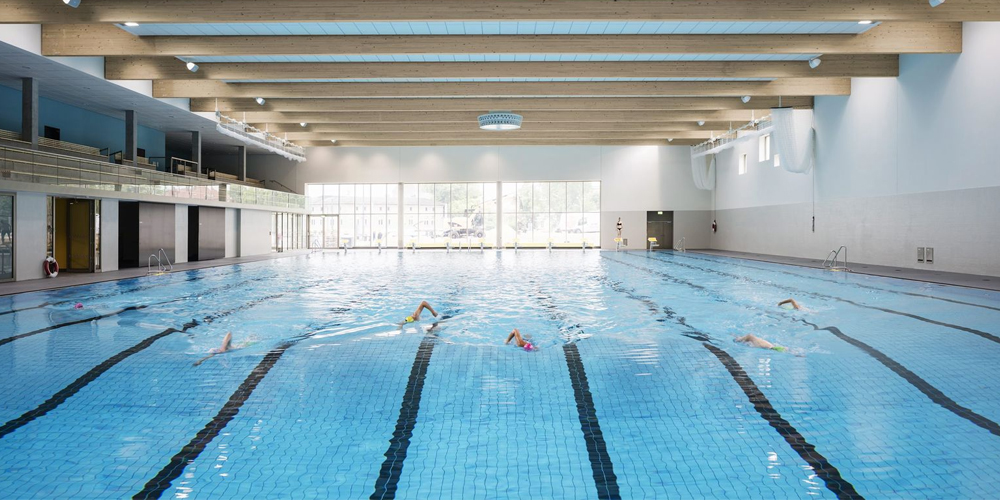Redovne doze hlora i šok tretmani za bazene ključni su faktori u dezinfekciji vašeg bazena. Ali, budući da oba imaju slične funkcije, oprošteno vam je ako ne znate tačno po čemu se razlikuju i kada vam je možda potrebno koristiti jedno umjesto drugog. Ovdje ćemo razdvojiti ta dva tretmana i pružiti uvid u razlike i sličnosti između tradicionalnog hlora i šok tretmana.
Hlor u bazenu:
Hlor je osnovna tvar u održavanju bazena. Djeluje kao sredstvo za dezinfekciju, kontinuirano uklanjajući štetne bakterije i mikroorganizme koji mogu uzrokovati bolesti. Bazenski hlor dolazi u nekoliko oblika, uključujući tekućinu, granule i tablete. Obično se dodaje u bazen putem klorinatora, plutajućeg uređaja ili direktno u vodu.
Kako hlor funkcioniše:
Hlor se rastvara u vodi i formira hipohlornu kiselinu, spoj koji efikasno ubija bakterije, viruse i druge patogene. Održavanje konstantnog nivoa hlora (obično između 1-3 ppm, ili dijelova na milion) je ključno. Ovo redovno hlorisanje osigurava da bazen ostane siguran za kupanje tako što kontroliše mikrobnu kontaminaciju.
Vrste klora za bazene:
Tečni hlor: Jednostavan za upotrebu i brzo djeluje, ali ima kraći rok trajanja.
Granulirani hlor: Svestran i može se koristiti za svakodnevno hlorisanje.
Tablete hlora: idealne za redovno, stabilno hlorisanje pomoću plutajućeg uređaja ili hlorinatora.
Šok u bazenu
Šokantna terapija za bazen se koristi za rješavanje ozbiljnijih problema kontaminacije. Tretmani šokom su neophodni kada je bazen bio intenzivno korišten, nakon kiša ili kada je voda mutna ili ima neugodan miris. Ova stanja mogu ukazivati na nakupljanje hloramina - spojeva koji nastaju kada se hlor kombinuje sa tjelesnim masnoćama, znojem, urinom i drugim organskim materijama.
Hlorni šok je dodavanje dovoljne količine dostupnog hlora (obično 5-10 mg/L, 12-15 mg/L za spa centar) da bi se potpuno oksidirala sva organska materija i amonijak, spojevi koji sadrže dušik.
Jača koncentracija šok sredstva za čišćenje bazena također pomaže u uništavanju hloramina, otpadnih proizvoda koji nastaju kada vaš obični hlor razgrađuje zagađivače.
Vrste šokova u bazenu:
Šok se brzo oslobađa, trenutno povećava nivo hlora, ali se i brže raspršuje. Općenito se preporučuje upotreba kalcijum hipohlorita i izbjeljivača umjesto TCCA i SDIC za šok od hlora u bazenima kako bi se izbjeglo veliko povećanje nivoa cijanurne kiseline.
Ključne razlike
Namjena:
Hlor: Održava redovnu dezinfekciju.
Šok za bazen: Pruža snažan tretman za uklanjanje nečistoća.
Učestalost primjene:
Hlor: Svakodnevno ili po potrebi za održavanje konstantnih nivoa.
Šok od bazena: Sedmično ili nakon intenzivnog korištenja bazena ili slučajeva kontaminacije.
Efikasnost:
Hlor: Neprekidno djeluje kako bi voda bila sigurna.
Šok: Brzo vraća bistrinu i higijenu vode razgradnjom hloramina i drugih zagađivača.
Hlor i šok u bazenu su oba važna. Bez upotrebe svakodnevnog hlora, nivoi hlora uneseni šokom bi ubrzo pali, dok bez upotrebe šoka nivoi hlora ne bi postali dovoljno visoki da iskorijene sve zagađivače ili dostignu graničnu vrijednost hlorisanja.
Međutim, važno je napomenuti da ne biste trebali dodavati hlor i šok istovremeno, jer bi to u suštini bilo suvišno.
Vrijeme objave: 20. juni 2024.


